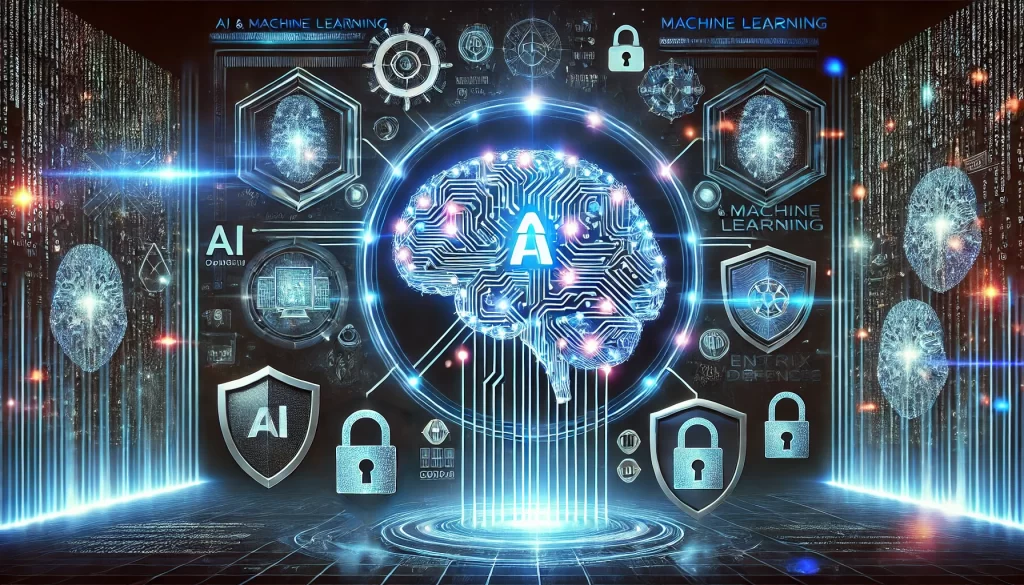
Introduction
Ransomware continues to evolve, becoming more sophisticated and damaging with each passing year. Attackers are leveraging advanced encryption, automation, and double extortion tactics to maximize their impact. As organizations enhance their security measures, ransomware groups are also adapting, creating an ongoing cybersecurity arms race.
In this article, we explore the future of ransomware, the latest trends in ransomware attacks, and the emerging defense mechanisms that security teams need to implement to stay ahead.
1. Emerging Trends in Ransomware Attacks
1.1 Ransomware-as-a-Service (RaaS)
- Cybercriminals are increasingly offering RaaS platforms, allowing even non-technical attackers to launch sophisticated ransomware campaigns.
- Affiliates can purchase or rent ransomware kits, making attacks easier to execute and harder to track.
- Examples of RaaS platforms:
- REvil (Sodinokibi) – One of the most notorious RaaS groups, responsible for high-profile attacks on businesses and supply chains.
- DarkSide – The group behind the Colonial Pipeline attack, causing fuel shortages in the U.S.
- LockBit – Known for its rapid encryption techniques and automated data exfiltration.
- BlackMatter – A successor to DarkSide, targeting critical infrastructure and large enterprises.
- Conti – Operated as a structured ransomware gang with a dedicated affiliate program for cybercriminals.
- Cybercriminals are increasingly offering RaaS platforms, allowing even non-technical attackers to launch sophisticated ransomware campaigns.
- Affiliates can purchase or rent ransomware kits, making attacks easier to execute and harder to track.
1.2 AI-Driven Ransomware Attacks
- Attackers are leveraging Artificial Intelligence (AI) and Machine Learning (ML) to automate reconnaissance, exploit vulnerabilities, and evade detection.
- AI-powered attacks adapt in real time, making traditional defense strategies less effective.
1.3 Double and Triple Extortion Tactics
- Instead of simply encrypting data, attackers now employ double extortion (stealing and leaking data) and triple extortion (pressuring third parties to pay).
- This increases the financial and reputational impact on victim organizations.
1.4 Targeting Critical Infrastructure and Supply Chains
- Attacks are shifting from individuals and small businesses to critical infrastructure sectors (healthcare, energy, finance) and supply chains.
- Disrupting key industries can cause widespread damage and increase pressure to pay ransoms.
1.5 Ransomware on the Cloud and IoT Devices
- Cloud environments and Internet of Things (IoT) devices are becoming new targets due to poor security configurations.
- Attackers exploit cloud misconfigurations and weak IoT security to deploy ransomware at scale.
2. Emerging Defense Mechanisms Against Ransomware
2.1 Zero Trust Security Model
- Organizations are shifting towards Zero Trust Architecture (ZTA) to minimize attack surfaces.
- Least privilege access and continuous verification help reduce the risk of lateral movement within networks.
2.2 AI-Powered Threat Detection & Response
- Security solutions now use AI-driven anomaly detection to identify ransomware-like behavior before execution.
- Behavioral analysis and predictive analytics improve early detection and automated response mechanisms.
2.3 Immutable Backups & Data Resilience
- Organizations are implementing immutable backups that ransomware cannot alter or delete.
- Air-gapped and decentralized storage solutions provide additional protection against ransomware wiping out backups.
2.4 Cyber Deception & Honeypots
- Deploying deception technologies like honeypots and fake credentials can lure ransomware into controlled environments for analysis.
- This provides security teams with insights into attacker methodologies and reduces real-world damage.
2.5 Advanced Endpoint Protection & EDR/XDR Solutions
- Endpoint Detection and Response (EDR) and Extended Detection and Response (XDR) solutions provide real-time monitoring, automated threat hunting, and incident response.
- AI-driven sandboxing and behavioral analysis can detect ransomware execution attempts before they encrypt files.
2.6 Stronger Regulations and Law Enforcement Actions
- Governments and law enforcement agencies are cracking down on ransomware groups by seizing servers and cryptocurrency payments.
- Stricter compliance regulations (e.g., GDPR, CISA, NIST 800-207) mandate better security controls and reporting requirements for ransomware incidents.
3. Best Practices to Prevent Ransomware Attacks
- Regularly update and patch systems to prevent attackers from exploiting known vulnerabilities.
- Train employees on phishing and social engineering techniques to reduce initial access attempts.
- Enforce Multi-Factor Authentication (MFA) to protect against credential theft.
- Conduct frequent security assessments and penetration testing to identify and remediate security gaps.
- Restrict administrative privileges and segment networks to limit ransomware spread.
- Deploy continuous threat monitoring and response tools to detect and mitigate attacks in real time.
4. Conclusion
The future of ransomware is evolving rapidly, and organizations must stay proactive in their defense strategies. By adopting Zero Trust security models, AI-driven threat detection, immutable backups, and cyber deception techniques, businesses can significantly reduce their risk exposure to ransomware threats.
With increasing law enforcement actions and global cooperation, the cybersecurity landscape is fighting back against ransomware actors. However, staying vigilant and continuously improving security posture is essential in defending against future ransomware threats.
Subscribe to SecureBytesBlog for expert insights on cybersecurity trends, threat intelligence, and ransomware defense strategies!

